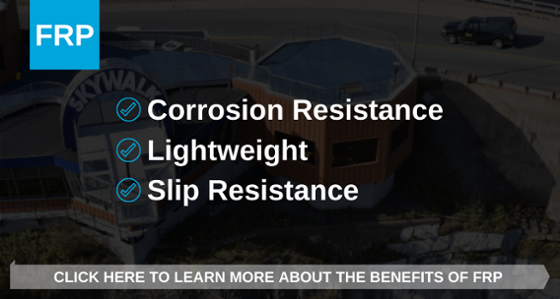Industrial flooring is needed for both preventing safety hazards and enhancing operational...
How Grating Systems Compare to Other Materials for Industrial Flooring
Industrial flooring is needed for both preventing safety hazards and enhancing operational efficiency. For instance, well-drained flooring in a food processing plant reduces slip risks and facilitates quick cleanup, ensuring both worker safety and minimal downtime. Selecting the right flooring material significantly impacts both safety and efficiency, influencing productivity, maintenance costs, and worker well-being. Grating systems, adaptable to diverse industrial environments, stand out as a versatile solution. Given the increasing preference for advanced materials, you should take the time to explore the various flooring options available.
Navigating Industrial Flooring Options
Grating systems, in their modern iteration, represent a significant advancement in industrial flooring. They are designed with an open grid pattern, often constructed from materials like steel or, increasingly, FRP. FRP grating systems offer unique properties, including exceptional corrosion resistance and a high strength-to-weight ratio.
How Traditional Materials Stack Up
- Traditional steel flooring has long been a staple in industrial settings due to its inherent strength and durability. However, steel is susceptible to corrosion, particularly in environments with high moisture or chemical exposure. This can lead to increased maintenance requirements and shorter lifespans. Additionally, the high weight of steel flooring can pose challenges for installation and structural support.
- Concrete flooring is renowned for its durability and ability to withstand heavy loads, making it a practical choice for many industrial applications. However, concrete can be susceptible to damage from chemical spills and requires regular maintenance to prevent cracking and deterioration. Furthermore, concrete flooring does not provide adequate drainage, which can lead to safety hazards in wet environments.
- While wood flooring may offer a natural appeal and some cost advantages, it has significant limitations in demanding industrial environments. Wood is susceptible to moisture damage, chemical exposure, and wear from heavy loads.
Grating Systems: Tailoring Solutions for Industrial Needs
Selecting the right industrial flooring requires careful consideration of several factors, including load requirements, environmental conditions, safety standards, and maintenance costs. FRP Grating systems offer tailored solutions that address these needs.
Here's a quote from Dave Anderson, Regional Sales Manager at Fibergrate. “These days, we often see trench covers being specified from our FRP for use in data centers. They are also popular for rooftop walkways. There is a lot of interest in this area. Rooftop applications that support rooftop living in apartments and commercial buildings are becoming very popular. You can install grating on top of a pedestal system to create a level and stable surface.”
Real-World Applications: FRP Grating Systems in Action
CXY Chemicals

Fibergrate's FRP molded grating used for track pan covers
In the demanding environment of chemical processing, the choice of materials can be decisive for both safety and longevity. CXY Chemicals in Domino, Texas, faced the challenge of bringing their rail car platforms into compliance for potentially hazardous material spills. To address this, they turned to Fibergrate's FRP solutions. The project involved installing spill containment areas at the sodium chlorate unloading terminal, utilizing 1-1/2" deep RIGIDEX® Moltruded® grating to provide safe walking surfaces beside and between the rails. This grating was supported by a 6" Dynaform® ISOFR channel.
Greenwood Village, Colorado
.jpg?width=640&height=480&name=FRP-Dock-Survives-Hurricane-Irma%20(4).jpg)
For centuries, steel has been the go-to material for countless applications from towering skyscrapers to trusty car frames. But over the last 50 years, the FRP vs steel debate has been marking more and more wins for the FRP side. Fiber-reinforced plastic, also known as fiberglass reinforced plastic (FRP), continues to gain ground as a trusted, durable, and corrosion-resistant building material.
Greenwood Village, Colorado

Fibergrate FRP pultruded grating used for rooftop deck
This entertainment complex in Greenwood Village, Colorado, needed a lightweight, durable, and low-maintenance decking solution for a rooftop patio. Fibergrate’s Safe-T-Span® pultruded grating was chosen for its corrosion resistance and high strength-to-weight ratio. This installation provided a level and stable surface, creating a safe and enjoyable outdoor space.
Hoodsport Fish Hatchery, Washington
Fibergrate’s Safe-T-Span® pultruded grating also provided an ideal solution for the Hoodsport Fish Hatchery in Washington. Faced with the need for durable and safe walkways in a constantly wet environment, the hatchery turned to FRP. The following video highlights the benefits of using Safe-T-Span® grating in this demanding application.
Making Informed Choices: Grating Systems and Your Industrial Needs
When selecting a grating system, consider the specific requirements of your facility. Factors such as load capacity, environmental conditions, and safety standards should be carefully evaluated. Consulting with experts can help ensure that you choose the optimal grating system for your needs. Fibergrate is a trusted provider of high-quality FRP grating solutions, offering a wide range of products to meet diverse industrial requirements.
By prioritizing safety, durability, and long-term performance, you can create a safer and more efficient workplace. Contact Fibergrate Today to explore our resources and expertise, and to learn how we can assist you with your industrial flooring needs.
Want to Keep Reading?
Learn more about the benefits of FRP, click the link below...


